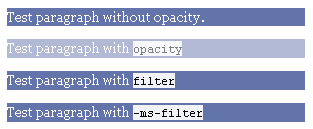

- GRAPHICCONVERTER OPACITY LAYER FOR MAC
- GRAPHICCONVERTER OPACITY LAYER PRO
- GRAPHICCONVERTER OPACITY LAYER TRIAL
- GRAPHICCONVERTER OPACITY LAYER FREE
The reason being that Photos Extension is not allowing me to hand-off edited images in TIFF format makes further editing useless.
GRAPHICCONVERTER OPACITY LAYER FOR MAC
used them in conjunction with Photos app for Mac but have stopped using extensions in Photos for a few weeks now.
GRAPHICCONVERTER OPACITY LAYER PRO
I have purchased some Macphun CK apps directly from MacPhun and also the DxO optics Pro for Photos from the Mac app Store.

If you have any further questions or remarks don’t hesitate to share them, still interested in learning. I would appreciate to know what your decision will be. I enjoyed the journey, and was glad with your post. My conclusion is I stick to Photo’s and the Macphun Creative Kit.
GRAPHICCONVERTER OPACITY LAYER TRIAL
Well I’ve found my way in exploring the trial of Affinity Photo’s. But that would mean a change in my workflow, that I don’t like.Ī tool like Photoshop (or LR ?) is overkill to me as well. If so it’s definitely a great app and I would prefer it over Photoshop. For my usage that’s enough.Īs stand-alone app Affinity photo’s is very powerful (It even has the object-removel with stacked photo’s), not sure if I want to dig further into the massive possibilities or even use it. So I hope Macphun will solve my RAW-lens-distortion problem (which I can solve in the mean-time by first editing the RAW and then use the extensions) and that they will soon release, as promised, an extension for Focus CK. So in terms of extensions, the Macphun-suite has more to offer, at least for my needs. Some MacPhun extensions, allow you to work to some extend in Layers, non of the Affinity extensions do. Lighting, Highlights, Shadows, levels etc.) have more to offer than the Affinity develop extension. So in essence this is not different from MacPhun and other extensions (DxO optics)įurther more I notice that the modification possibilities of the standard Apple-photos adjustments (f.e. Modification by Affinity extension either in RAW or JPEG -> extension hand-over to Photo’s is JPEG.

(the info-pain of Photo’s even when activated with cmd-i when in extension-mode says RAW, apparently referring to the original, this was causing my confusion) RAW modified in Apple-Photo’s:-> hand-over to Affinity: extension is JPEG including the RAW-modifications. RAW unmodified in Apple-photo’s -> hand-over to Affinity: extension is RAW (for the develop extension at least) So why don’t you give it a try ?ĭid some more “digging” with additional results (and to avoid misunderstanding of what I wrote earlier)
GRAPHICCONVERTER OPACITY LAYER FREE
That’s not because the Affinity App isn’t good, as far as I can see it is excellent, but it’s far too complicated for me (as is Photoshop) and filled with things I don’t use.Īffinity does have a free trial (10 days) through their website (not via the App-store). If MacPhun would have adequately solved their RAW-conversion problem already, I wouldn’t have started using Affinity. Seems to me that Affinity is a more solid, more comprehensive and thus complicated tool-set. Macphun, does have plug-inns for LR and Aperture, not sure about Affinity. Sometimes it’s hard to fine-tune in Macphun as there is a delay in respons. (which has far more settings that I don’t understand yet) so I love the simplicity and power of MacPhun in this respect.Īffinity is overall faster then Macphun (at least on my machine). So for example I find it much easier to use Snapheal (which does an excellent job), than the retouch tool of Affinity. The downside of this is, at least to me as non-photoshop user, that it is more difficult to use (learning curve). Several people already trashed their Photoshop app. In my opinion (and of several people on the internet) it is a very powerful tool which, already today, in many aspects can compete with Photoshop. The stand-alone version of Affinity provides much more functionality to even manually adjust the RAW conversion settings for the conversion, and you can choose different RAW-engines as well.įurther more Affinity Photo’s is much more of a “Photoshop” tool then the MacPhun suite. In the extensions they simple use the Apple core-image RAW conversions (which is fine for me). Must say though that I love the power and simplicity of the UI from the Macphun software.Īffinity Photo’s does a much better job on handling RAW-footage. I reported this already > two months ago, today Macphun told me that they are still working on the problem. (Photo’s will then pass a jpeg in stead of a RAW). The photo’s show uncorrected lens-distortions, to solve this I first have to do some editing in Photo’s and then use those extensions. This means that I cannot use the RAW files from Photo’s to directly use those two extensions. I must conclude that two of the Macphun apps, “noisless” and “intensify” don’t correct the RAW-files I use whereas Apples Photo’s does. So I will share them with you.įirst of all I should tell you that I prefer working with RAW. I just had my first experiences with Affinity Photo using their trial.


 0 kommentar(er)
0 kommentar(er)
